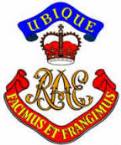I don't think Woodward meant actual "chaff" in case of auxiliaries. He meant using these ships as decoys his carriers may hide behind. This is what actually happened soon after, when they lost SS Atlantic Conveyor.ORIGINAL: witpqs
Point taken, but if I am reading this correctly they were still part of the same formation ("a 'chaff' wall" isn't going to work if the chaff deploying ships are too far away, far enough away to be pickets), so the lesser value ships were not sent out on their own.
Battle Group came under attack from enemy planes that came in low and launched a couple of ASMs. HMS Ambuscade deployed chaff. Enemy ASMs targeted the decoys and went through the chaff cloud. Going further, the missiles locked on to the next thing they saw - SS Atlantic Conveyor. If it wasn't there, it was likely that the carrier HMS Hermes would've been targeted instead.
So while it is true that these ships weren't simply sent forward without any support (in fact, Conveyor, being the biggest of all, was kept further back than others in previous days), they were used to shield the most valuable ships of the group, carriers, in time when armed escorts were in short numbers.Her [Atlantic Conveyor's] war had lasted exactly thirty days and, even without her final mission accomplished, we still owed her a considerable debt. Not least, I suppose, because she was in a dead line between Hermes and Ambuscade. If the Conveyor had possessed a chaff system and decoyed the missiles, they might have come straight on for the carrier. We may, or may not, have been able to divert them yet again.










